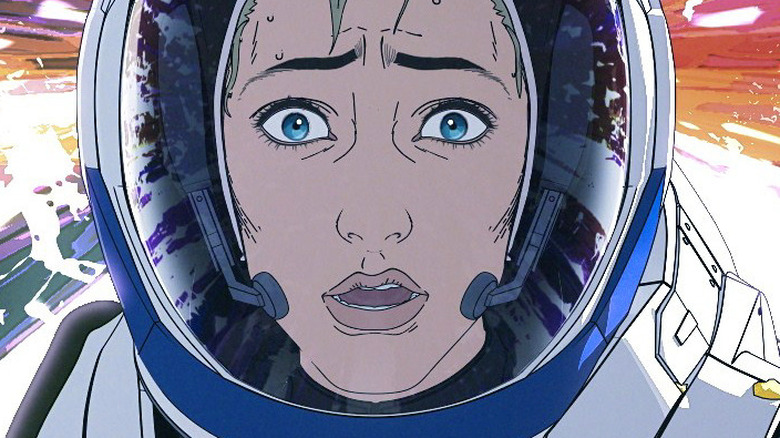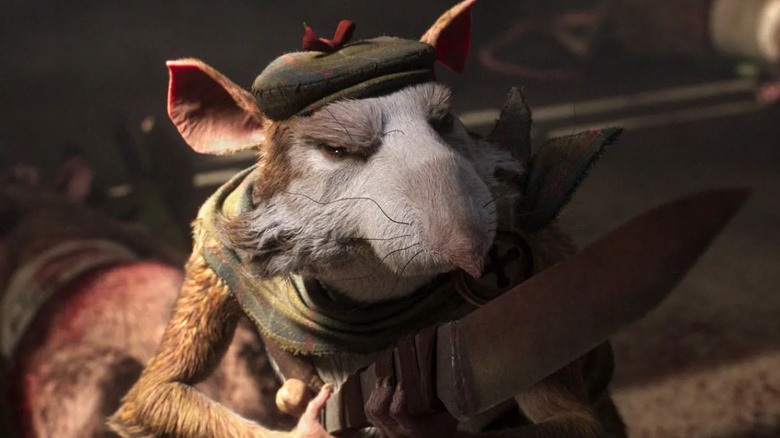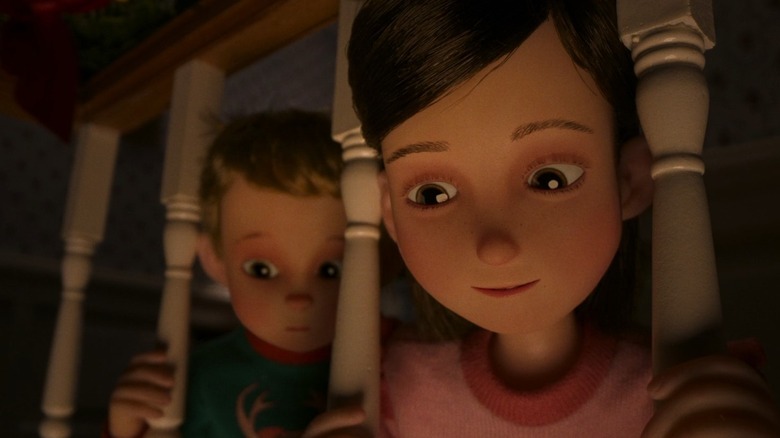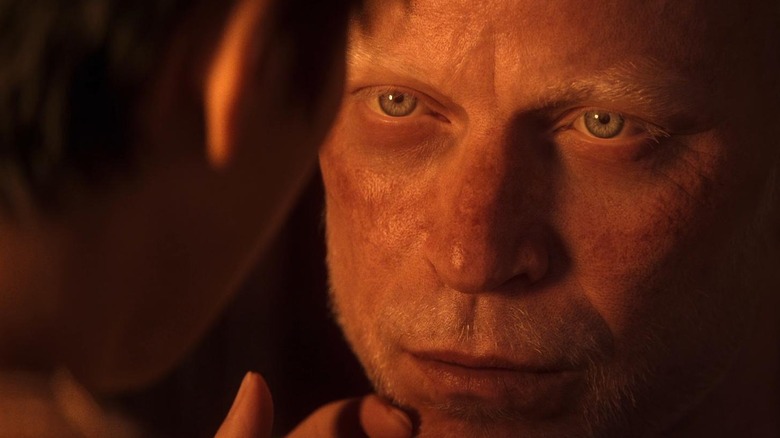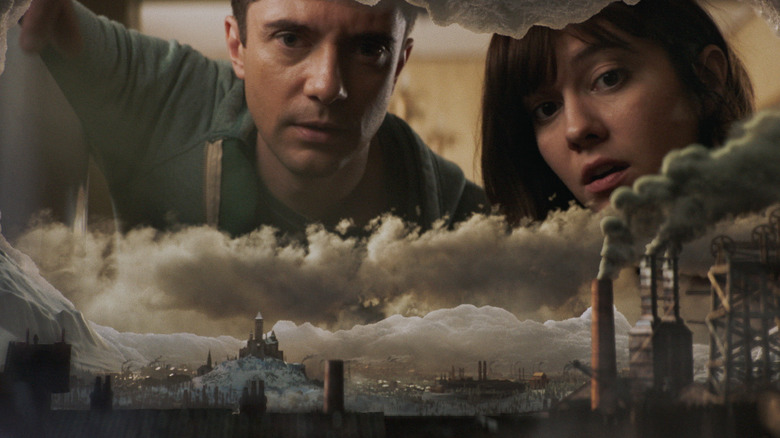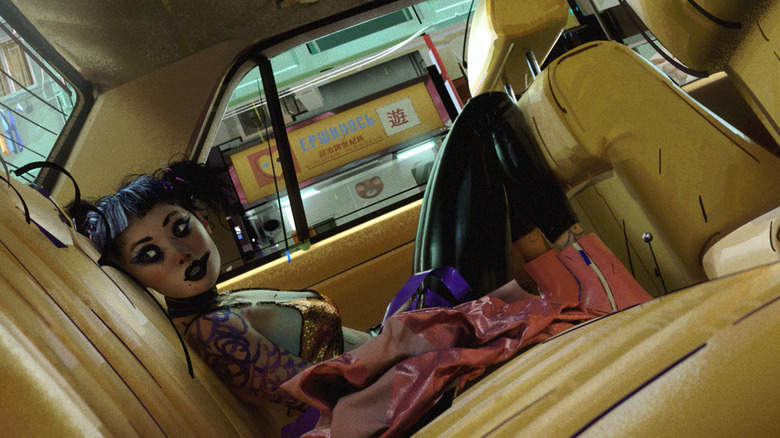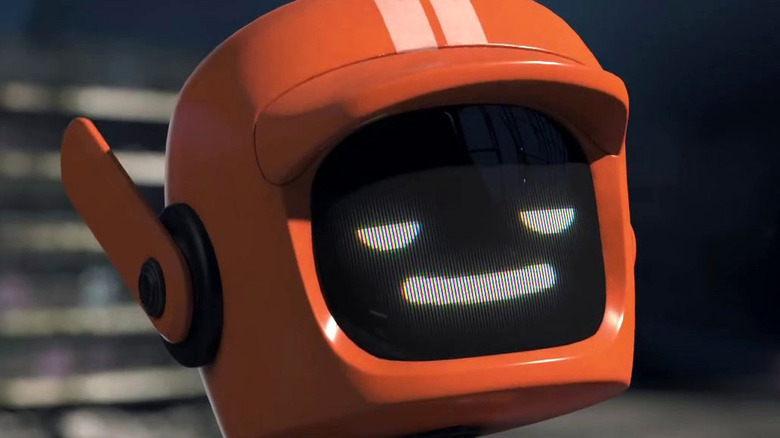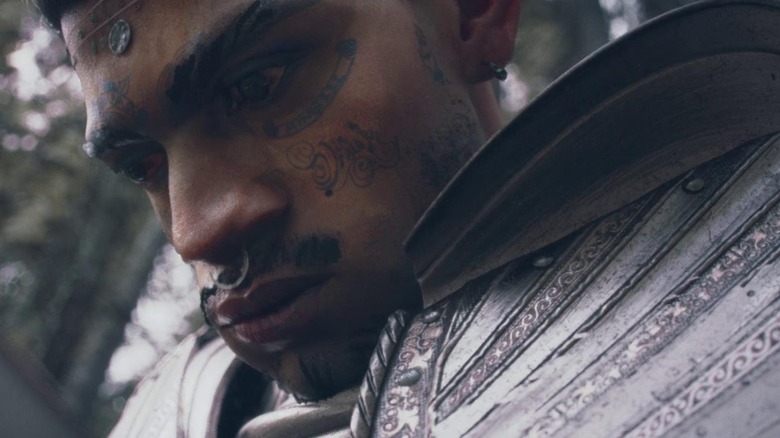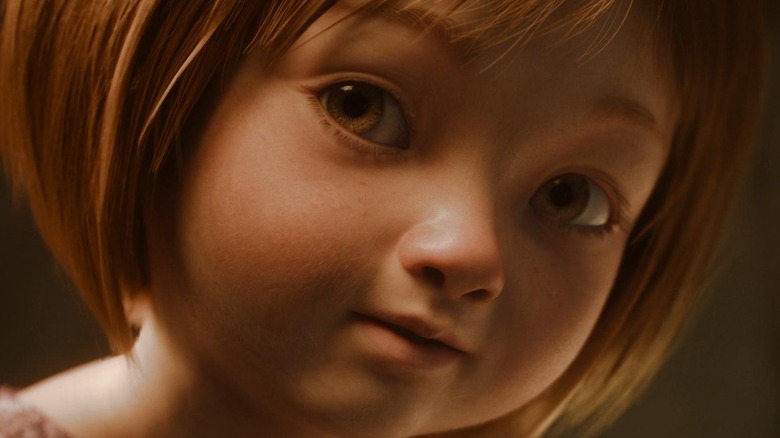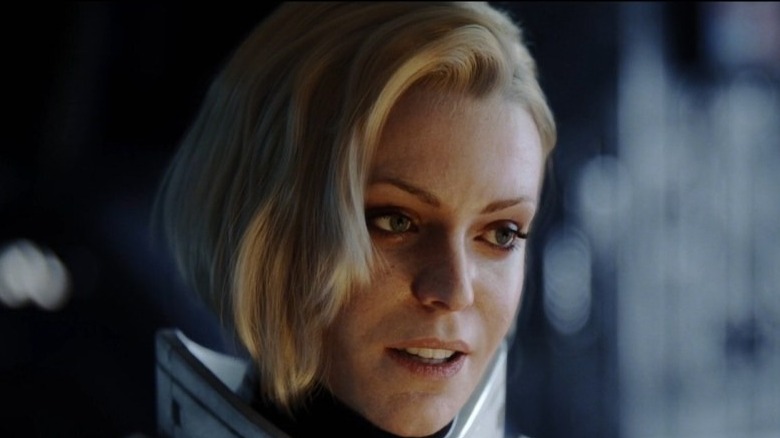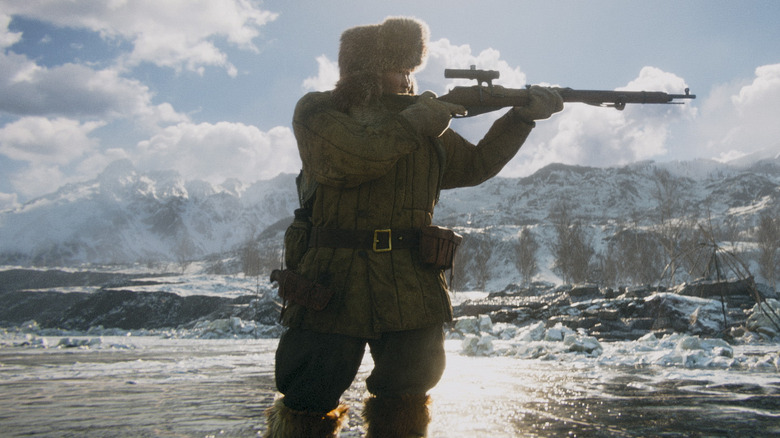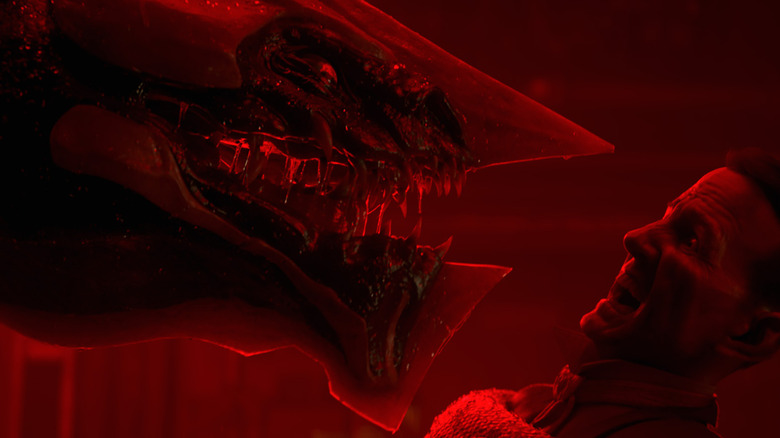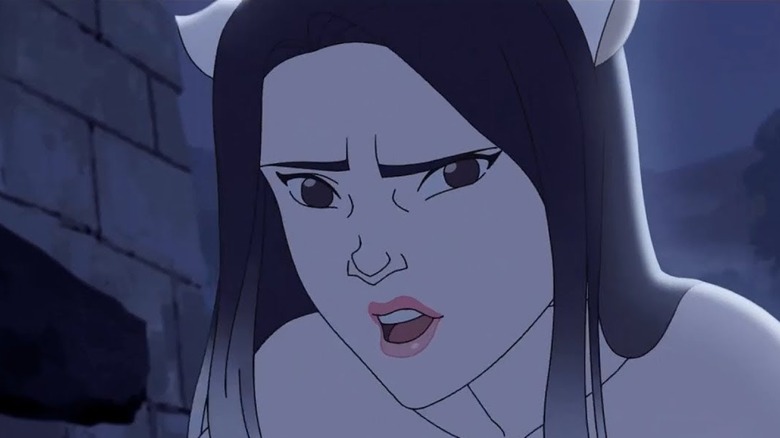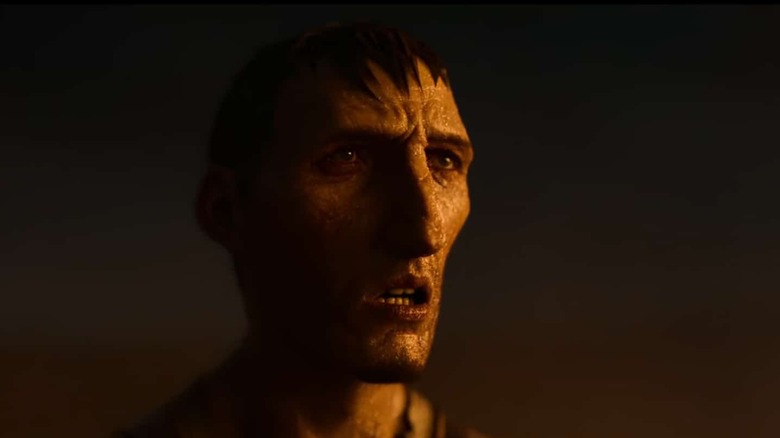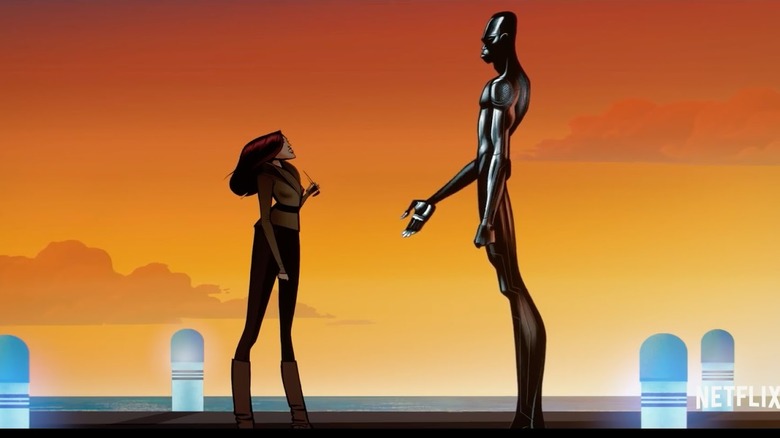14 Best Love, Death & Robots Episodes Ranked
The journey that led to the production of "Love, Death, and Robots" is almost as fascinating as the program itself. It involves Hollywood's gradual evolution, grudges, and a rare resurrection of a project from development hell. in the late 2000s, David Fincher teamed up with Tim Miller, the eventual "Deadpool" director, to adapt the 1981 Canadian adult animated picture "Heavy Metal." The pair planned to break the film into short segments directed by other directors. However, none of this happened until Netflix took it up, altered the title to "Love, Death, and Robots," and turned it into a series.
According to an interview with David Fincher published by The New York Times, Tim Miller has collected almost 350 short stories to convert into animation. Each episode features a fresh animation style and a new story world. Fincher's essential contribution was his desire to break away from the predictability of half-hour comedies and hour-long dramas. As you progress through the episodes, you never quite know what you're going to get next.
To their credit, Netflix opted to embrace the loose structure and show the episodes non-chronologically on their site. The show's anthological structure worked wonderfully because each episode might appeal to a different audience based on their preferences. However, to rank the top episodes, we will only consider those with at least a rating of 7 on IMDb.
14. Mason's Rats (Season 3, Episode 7)
Mason does a routine barn inspection, with pest control as his top priority. When he enters the barn, he finds it filled with rats and decides to take drastic measures. He chooses to use a shotgun to hunt the rats. To Mason's amazement, the rats have adapted to his severe tactics and are now using weapons to protect themselves, leading Mason to hire a pest control service.
The pest control business tells Mason that weapon usage is nothing to be concerned about, explaining that even rats are evolving to survive in modern times. The agency then tells him that the rat problem will be resolved. However, as time passes, the pest control service's methods become increasingly brutal, so Mason begins to wonder if this is what he intended. He finally joins the rats in their fight to defeat the pest control service and rescues them from being murdered by one of their machines. In the end, he and the rats gain mutual respect.
"Mason's Rats" is based on a short story by Scottish writer Neal Asher and tackles a wide range of topics, including war, brutality, and immigration. Mason initially thinks the rats are different from him, but after watching how hard they are willing to fight for their lives, he realizes they aren't that different from him.
13. All Through the House (Season 2, Episode 6)
It's Christmas Eve in "All Through the House," and Leah is awakened by the noises of Santa Claus moving around in the basement. Excited, she wakes up her brother Billy so they can both go downstairs to see their secret gift giver. They sneak into the hallway, go down the stairs, and slip behind the sofas, remaining as silent as possible. At last, they catch a glimpse of his shadow behind the Christmas tree, which looks eerily like Santa Claus. However, when the creature emerges, the kids are shocked to discover that it looks more like the xenomorph from the movie "Alien" than what we all envision of Santa.
Leah and Billy try to return to their room without alerting the frightening-looking creature, but they make too much noise, and the creature notices them. The creature approaches them threateningly and pins them against a wall. It then begins to scrutinize their faces, and he murmurs "good" and gives them their Christmas gifts. Later, Billy wonders what would have happened if the monster had considered them bad.
Despite all the proof that the visitor is Santa, he simply seems different. The audience and the characters fear something considerably more sinister is at work right up to the end.
12. Snow In The Desert (Season 2, Episode 4)
In a dystopian future where humanity has achieved interplanetary settlement, Snow walks through a desert. He is a wanted man, and his image is broadcast over massive LCD screens. He doesn't seem too concerned, but soon enters a pub and is instantly recognized by three bounty hunters. Snow tries to warn them that this will not end well, but they attack him nonetheless. He takes out two of them, but one shoots his arm off. Just as the third is ready to kill him, Snow is saved by a lady named Hirald, who shoots the bounty hunter.
Hirald follows Snow home, and Snow invites her into his tent to escape the hot sunlight. She then sees firsthand how swiftly Snow's hand heals. Later, she admits that she wishes for him to return to her so that they might study him and achieve immortality. Snow is at first skeptical. However, after they battle off additional bounty hunters, he discovers that she is a combination of AI and humanity. They soon fall in love because of their shared immortality.
The fact that very few episodes in "Love, Death & Robots" are actually about love makes "Snow In The Desert" noteworthy. Snow, in particular, rediscovers love when he meets someone who can live forever with him, putting an end to his decades of solitude.
11. Ice Age (Season 1, Episode 16)
In "Ice Age," Rob and Gail move into a New York apartment and notice an old refrigerator while moving. Rob tells Gail that he likes these antique refrigerators because of how they were made. When they decide to unwind with a cool beverage, Rob takes an ice cube from the fridge upon which he finds a little mammoth. When they investigate the refrigerator, they uncover a lost civilization within.
They discover that this civilization is growing far faster than our own. The tiny world catches up with modern society in a matter of minutes, but that's when things start to spiral out of control. Nuclear war breaks out, exploding in Rob's face. Gail then suggests they close the fridge and give society time to work out their issues. They later open the refrigerator again and realize that society has developed far beyond our own, at which point it transforms into a singular energy and vanishes into thin air. Rob flicks off the refrigerator, believing it is the end of that civilization. However, the next morning, they discover another culture has begun forming within the refrigerator.
Looking at people through such voyeuristic eyes is both exciting and terrifying. While it is uncertain why we go to war, it is abundantly clear how damaging it is. Additionally, it demonstrates how some facets of how our own lives are both under our control and entirely outside of it.
10. The Witness (Season 1, Episode 3)
A woman in a hotel witnesses a man murdering someone. When the man sees her, he rushes after her. The woman hides in a cab because she believes the man is attempting to kill her. She tries to phone the police, but when they ask who she is, she chooses to remain anonymous. Little does she know, however, that the man is covertly following her. She makes her way to a strip club where she works, and the man follows her into the room.
The lady begins dancing for a customer, only to find that the man she is dancing for is the same man she saw murdering someone earlier. The man pursues her as she flees, and they both end up back at the hotel where she is staying. She pulls out a revolver and shoots him. Looking out the window, she notices a doppelgänger of the man she just murdered watching the entire thing.
"The Witness" illustrates the vicious cycle of indefinite abuse. It's one of the most ingenious ways this sensitive issue has ever been explored on television.
If you or someone you know is dealing with domestic abuse, you can call the National Domestic Violence Hotline at 1−800−799−7233. You can also find more information, resources, and support at their website.
9. Three Robots (Season 1, Episode 2)
Three robots walk through a post-apocalyptic wasteland, exchanging humorous banter as they try to figure out human civilization and what ultimately led to their demise. They examine human technology and make jokes about the end of civilization, claiming that it was finally brought about by our failure to address the climate catastrophe.
However, it turns out that the choice to give cats opposable thumbs expedited human extinction. A cat they discover during their exploration begins to follow them and speaks in a very assertive cadence, claiming that the cats hastened human extinction using tools such as nuclear weapons, climate change, and environmental calamities. The cat demands to be petted, and the three robots agree to stay on Earth a little longer.
"Three Robots" is the only episode of the series that has spawned a sequel, and with good reason. No other episode addresses humans' self-destructive actions as explicitly as this one does. From our politics to our technology, all of humanity's ideas are presented as harmful to us in some manner.
8. Jibaro (Season 3, Episode 9)
Jibaro is a deaf knight traversing a hilly forest when a siren emerges from a nearby river. She begins singing and dancing, which causes some nearby priests to go into a trance. They soon go delirious and rush around slashing at each other until they all die.
Jibaro is spared since he couldn't hear the siren's voice. This piques the siren's interest, and she chooses to follow him as he flees from the event. He eventually finds an area where he feels secure enough to sleep. The siren chooses to examine him while he is sleeping. The two become smitten with one another but Jibaro's greed overcomes him and he murders the siren for her fortune. In an extraordinary turn of events, Jibaro regains his hearing, but the resurrected siren finishes him off.
"Jibaro" delves into the brutality of the Spanish invasion and colonialism of South America. It focuses on the greed of the knights who were finally consumed by the terrain and never returned to their homes.
7. Pop Squad (Season 2, Episode 3)
In "Pop Squad," Briggs, a cop from the future, makes an arrest. The house is dingy and poorly lit, implying that it contains low-income residents. Briggs notes that the home's owner has devised novel ways to care for newborns. Briggs then takes several children from house and shoots them.
Briggs' world is filled with immortal humans, but breeding is forbidden since there isn't enough room for new people. Humans have lost touch with their humanity after living for so long. However, Briggs begins to experience a crisis of consciousness, which eventually leads him to discover another woman who has unlawfully had a child. When he questions why she had a kid, she simply says that her daughter makes life worthwhile. Their mutual distrust leads to a brawl, and Briggs chooses to flee rather than take either of their lives.
However, he finds his partner waiting outside, and the two have a gunfight in which they both die, with Briggs having finally done something selfless by protecting the woman and her child.
6. Beyond the Aquila Rift (Season 1, Episode 7)
Thom and his crew are preparing for an intergalactic expedition, which means they need to enter surge tanks that will keep them alive during their hypersleep so they will arrive in good health at their destination. When they awake, they find themselves hundreds of thousands of light-years away from home. Thankfully, it is Thom's old friend Greta who wakes them up.
Greta informs them that they are off course and that the same thing happened to her. Thom starts getting closer to Greta, and they rekindle their fling from years before. However, Thom can't shake his feeling that none of this is true. He presses Greta to show him where they are, and she grudgingly complies. The spaceship has wound up among a hive of other wrecked vessels, and Greta is an arachnid-shaped extraterrestrial who keeps the crew in a simulated world as they await their impending demise.
"Beyond the Aquila Rift" will most likely appeal to "Matrix" aficionados, as the show deals with the question of what reality is in the first place. Although we may never be sure of the fake Greta's motivations, the audience is left to question if keeping secrets has any merit.
5. The Secret War (Season 1, Episode 18)
Lieutenant Zakharov leads a troop of soldiers into Siberia to monitor a village infested with monsters. The platoon then follows the path the monsters have taken, fights a few of them, observes another platoon battle them from afar, and even figures out where the creators originated.
Soon, the platoon finds itself in a full-fledged battle with the creatures. Zakharov orders his son to flee with the coordinates of their location and all the information they have obtained. He then requests that air support bombs the creatures so that everyone else is safe, even if it means sacrificing their own lives. The creatures annihilate the soldiers, leaving none alive before Soviet aircraft destroy all of the creatures.
"The Secret War" explores the nature of sacrifice and gives the viewer a front-row seat to witness what some individuals are willing to give up for the broader benefit of humanity.
4. Sonnie's Edge (Season 1, Episode 1)
Sonnie and her friends are participants in an underground fighting game in which they assume the consciousness of mechanically engineered beasts in a cyberpunk future. Sonnie has generated quite a fuss since her beast has never lost, earning her fame among both admirers and opponents. Soon after, she is contacted about rigging a fight, but she decides to win the match she is meant to throw.
Shortly after that, Sonnie meets the mistress of the person who instructed her to throw the fight who is curious about Sonnie's secret. The two then have an intimate encounter, during which the mistress stabs Sonnie. To the mistress ' amazement, Sonnie has completely transferred her consciousness to the beast. As a result, the beast murders the mistress, and every night, Sonnie is in the ring battling for her life.
"Sonnie's Edge" isn't heavy on themes, but it establishes the tone for the rest of the show, from the aesthetics to the harrowing lengths it will go to depict love, death, and robots.
3. Good Hunting (Season 1, Episode 8)
In early twentieth-century China, Liang and Yan meet by coincidence. When Liang's father, a human, goes looking for Yan's mother, a Huli Jing (a shapeshifting fox-like creature), Liang and Yan argue, prompting Liang's father to capture and murder Yan's mother. Liang assists Yan in escaping when he assures his father that Yan's mother had no puppies. Years later Liang goes to an industrialized Hong Kong and maintains contact with Yan.
However, industrialization has severely limited Yan's abilities, and she can no longer shapeshift, which prevents her from hunting. Instead, she uses her beauty to entice men to do her bidding. This enrages Liang, as this type of behavior is what caused their disagreement years ago. Liang thought this was why Huli Jings were so reviled; they bewitch men. However, Liang soon realizes that the men are the ones who are taking advantage of Yan. Following a series of unfortunate incidents, Liang and Yan decide to transform her into a mechanical Huli Jing, but instead of hunting for food, she pursues people who victimize women.
"Good Hunting" looks at technological advancements impact our lives. In the episode, technology is shown to be able to be used for good or for evil — it all depends on who is using it.
2. Bad Travelling (Season 3, Episode 2)
In "Bad Travelling" Torrin is the mate on a ship that is attacked by the thanapod, a giant crustacean. The thanapod strikes many crew members, including the captain, before fleeing below deck. The crew members draw straws to choose who will go below deck to face the thanapod. Despite the fact that the biggest crew member pulls the smallest straw, Torrin eventually heads below deck.
When Torrin finds the creature, the thanapod communicates with him through a deceased crew member, stating that he wants to be brought to a nearby inhabited island. Until then, he'll need to be fed by crew members. Torrin then returns to the deck and outlines the creature's demands, stating that he would prefer they direct the thanapod to an uninhabited island. Everyone decides to transport the massive crustacean to the crowded island instead. Torrin develops a scheme to slowly feed them all to the thanapod before fleeing the ship and blowing it up with the creature still onboard.
Torrin is always willing to bring things up for a vote and ready to sacrifice himself, but he never loses sight of his morals when he sees democracy fail. Tim Miller mentioned in an interview with Looper that the Fincher-directed episode is one of the darkest of the series, and we must agree.
1. Zima Blue (Season 1, Episode 14)
A reporter is invited to Zima Blue's island to interview the reclusive artist, who hasn't had direct contact with the press in over a century. Over time, his work has come to defy all expectations. Zima Bluer began by creating billboard-sized blue murals that have now reached a size that is celestial in scale. His enigmatic personality adds to the universal acclaim and adoration for his art. Nobody knows where he comes from, although it is revealed that he started in portraiture.
Zima Blue assures the reporter that most of the stories told about him are false. He informs her that he is not a man but was initially created to be a pool cleaning robot. His creator tweaked him when she needed to make other robots, and he has been passed down from owner to owner, each of whom has added their own unique tweak until he finally became sentient. He then tells her that the company's blue tile for pools is called Zima Blue and that his final artistic performance would be to convert back into a pool-cleaning robot.
"Zima Blue" delves into self-actualization and explores how no creative activity or accolades ever made Zima feel complete. Instead, he finally finds genuine satisfaction after recognizing his true essence in one of the best episodes of "Love, Death & Robots."
